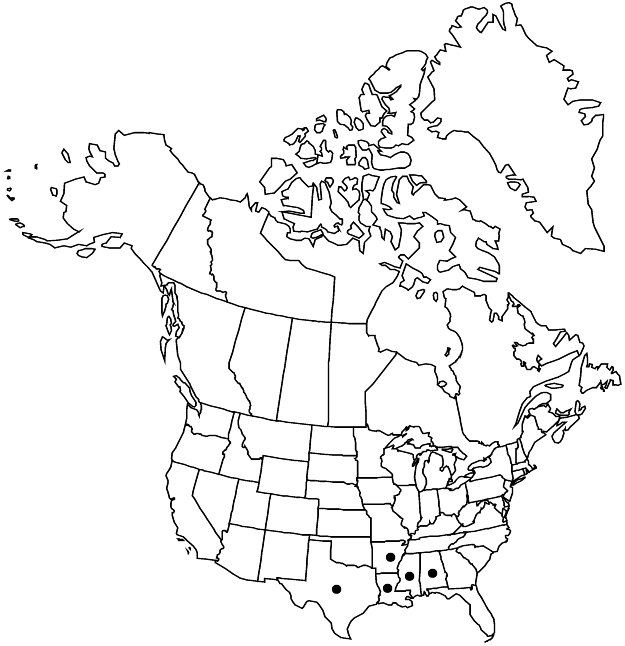Difference between revisions of "Crassula longipes"
Kew Bull. 39: 712. 1984,.
imported>Volume Importer |
imported>Volume Importer |
||
| Line 51: | Line 51: | ||
|publication year= | |publication year= | ||
|special status= | |special status= | ||
| − | |source xml=https:// | + | |source xml=https://bitbucket.org/aafc-mbb/fna-data-curation/src/2e0870ddd59836b60bcf96646a41e87ea5a5943a/coarse_grained_fna_xml/V8/V8_303.xml |
|genus=Crassula | |genus=Crassula | ||
|species=Crassula longipes | |species=Crassula longipes | ||
Latest revision as of 22:42, 5 November 2020
Plants aquatic or terrestrial, annual. Stems spreading (in water) or erect, yellow in age, branched, to 25 cm if aquatic, to 5 cm if terrestrial. Leaf blades lanceolate to oblanceolate, 2–5 mm, apex acute to obtuse. Inflorescences lax; flowers 1 per node. Pedicels 1–8 mm. Flowers 4-merous; sepals triangular-ovate, 0.4–0.7 mm, apex obtuse; petals lanceolate, 1.1–1.7 mm. Follicles ascending, 12–14-seeded, obliquely lanceoloid; old follicles spreading, flat. Seeds oblong with rounded ends, 0.2–0.4 × 0.1–0.2 mm, not papillate, dull, rugulose.
Phenology: Flowering spring.
Habitat: Aquatic or in wet sand or mud
Elevation: 0-400 m
Distribution

Ala., Ark., La., Miss., Tex., Mexico, s South America.
Discussion
M. Bywater and G. E. Wickens (1984) showed Crassula longipes in southern Florida, but according to D. B. Ward (pers. comm.), the record is probably based on a W. M. Carpenter collection from East Feliciana Parish, Louisiana.
Selected References
None.